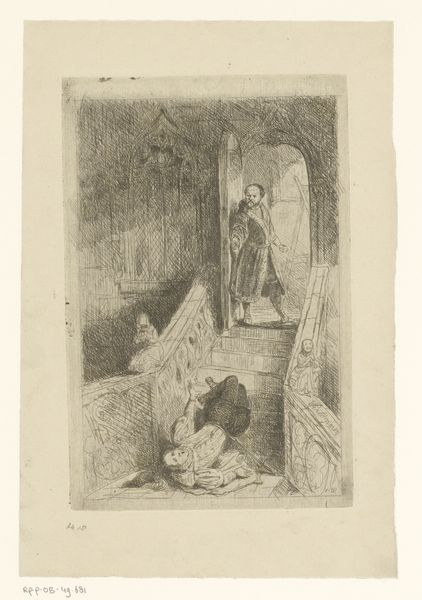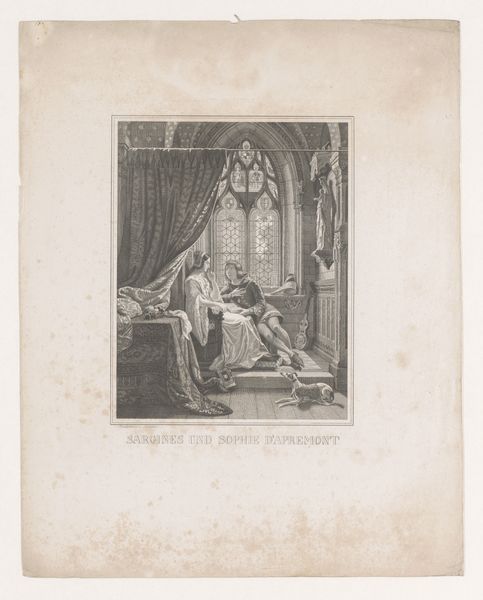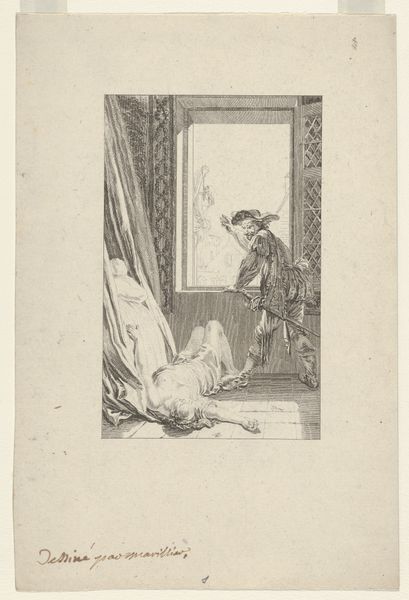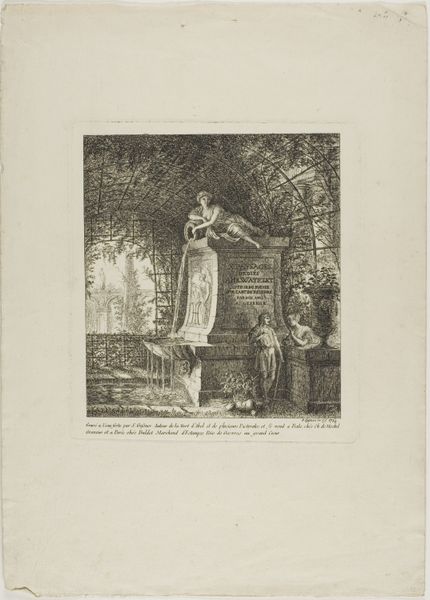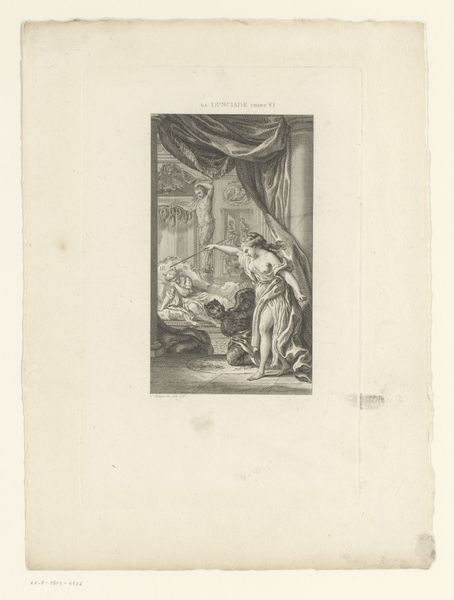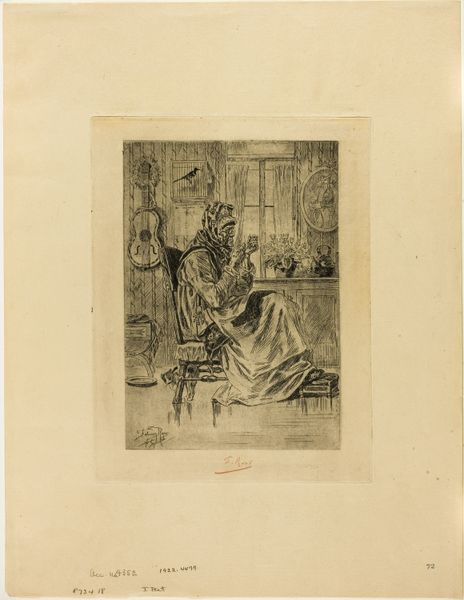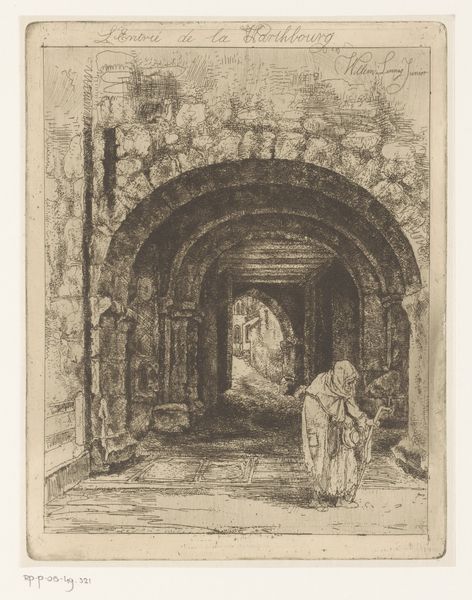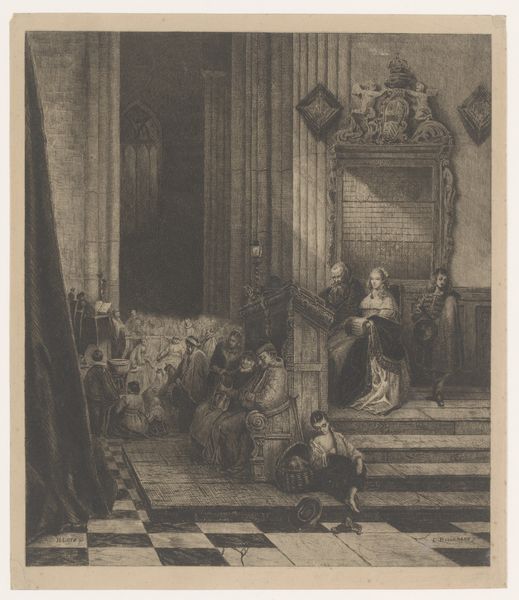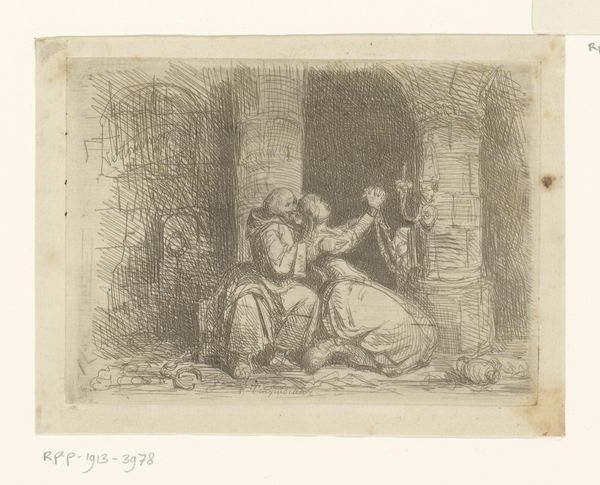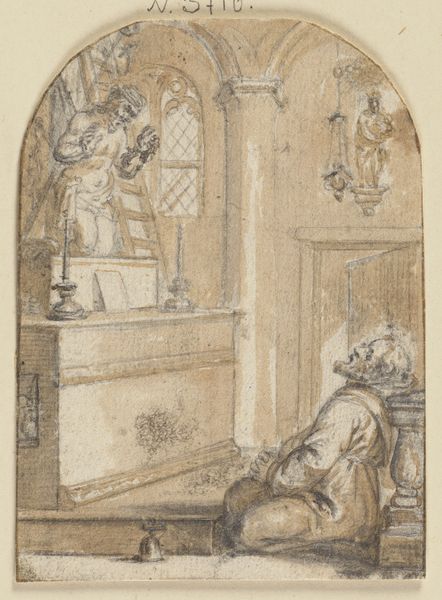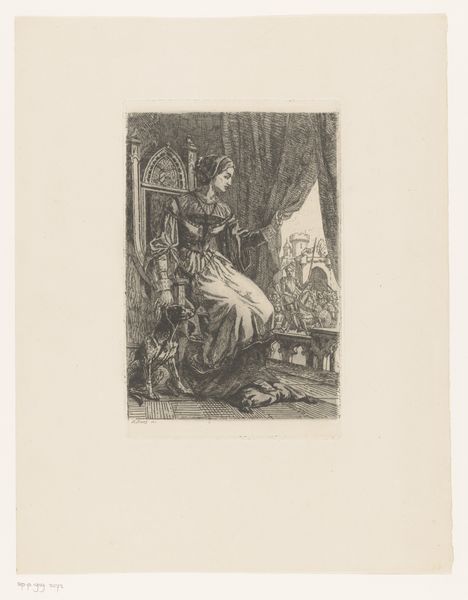
Erasmus bovenaan een trap met onderaan een gevallen man 1841
0:00
0:00
drawing, pencil, pen
#
drawing
#
aged paper
#
toned paper
#
light pencil work
#
quirky sketch
#
pencil sketch
#
old engraving style
#
figuration
#
personal sketchbook
#
romanticism
#
pen-ink sketch
#
pencil
#
sketchbook drawing
#
pen
#
genre-painting
#
history-painting
#
sketchbook art
Dimensions: height 183 mm, width 122 mm
Copyright: Rijks Museum: Open Domain
Guillaume Joseph Vertommen created this print, Erasmus bovenaan een trap met onderaan een gevallen man, using etching techniques in 19th century Netherlands. We see the famed Renaissance humanist, Desiderius Erasmus, standing at the top of a staircase while a fallen man lies below. The work creates meaning through the visual codes that were circulating in the Netherlands at this time. The Dutch Golden Age in the 17th century saw the rise of Humanism, and with it, the development of universities and a bourgeois public sphere. The conservative, wealthy figure of Erasmus, who was committed to reforming the church from within, came to represent a particular set of cultural values. The fallen man is a reference to those who sought radical reform and revolution. Works such as this speak to the social structures of their time, and historical research allows us to understand them better. Erasmus was very influential in his time, and even now his texts are still being studied. The meaning of art is always contingent on its social and institutional context.
Comments
No comments
Be the first to comment and join the conversation on the ultimate creative platform.
